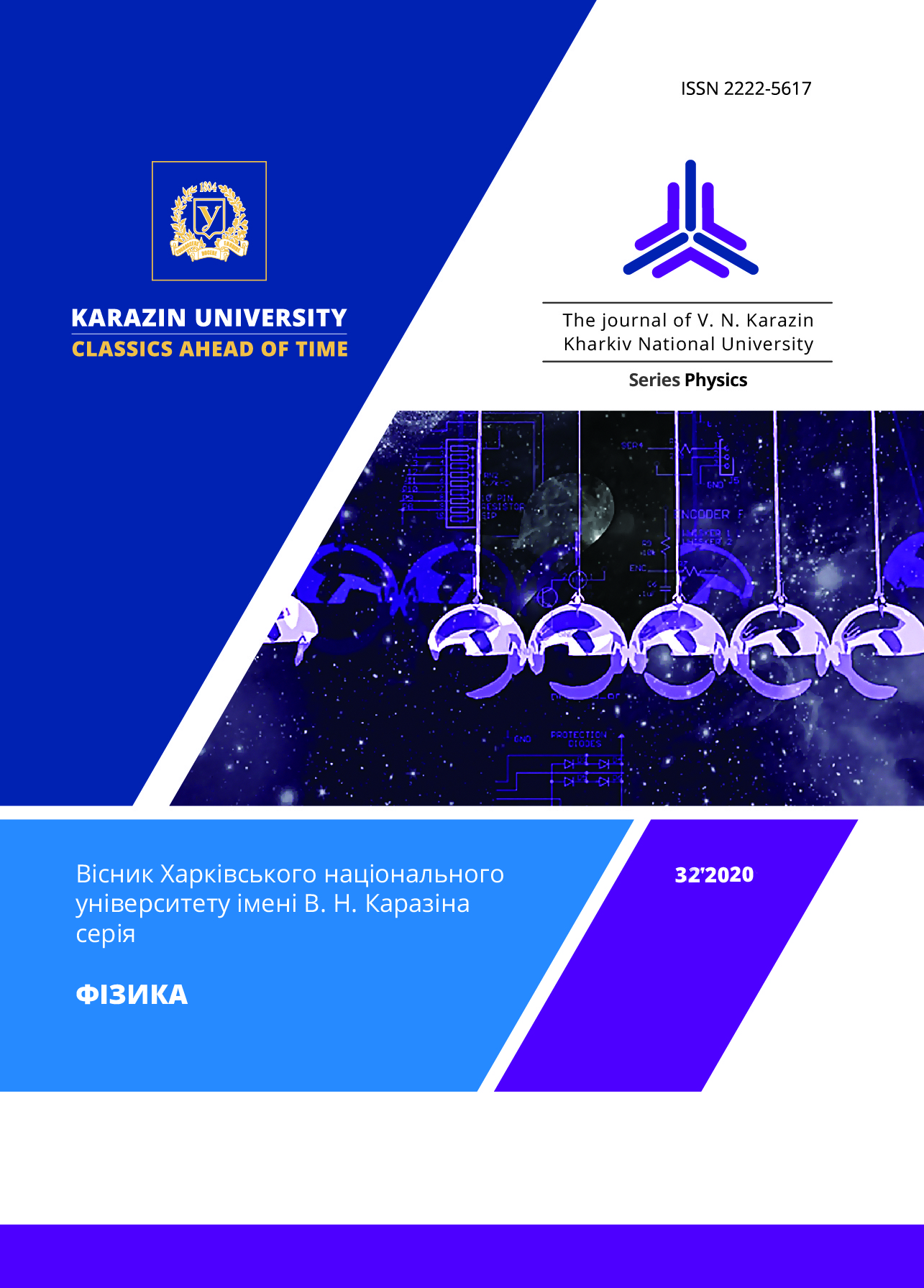Капілярний (лапласівський) тиск і надпровідність нано-розмірних кристалічних частинок напівметалів
Анотація
Обговорюється можливість переходу в надпровідний стан за температур, близьких до кімнатних, нано-розмірних кристалів напівметалів вісмуту і сурми, а також їх сплавів. Всі фізичні міркування, а також оцінки, наведені в роботі, засновані на законах класичної термодинаміки, а також на висновках квантової теорії надпровідності (теорії BCS), в основу якої покладено ідею "спарювання" електронів (формування куперовських пар) в результаті електрон-фононної взаємодії.
Показано, що в нано-кристалічних частинках діють внутрішні стискаючі напруги капілярного походження, величина яких достатня для перетворення напівметалів на метали. Цей перехід супроводжується зміною енергетичного спектра електронів: «невироджені» напівпровідники стають металами, в яких газ «вироджених» електронів характеризується низьким значенням енергії Фермі. Остання обставина обумовлює збільшення щільності електронних станів і підсилює електрон-фононну взаємодію в металізованих напівметалах.
Як вихідні хімічні елементи, з яких можна синтезувати надпровідні сполуки в умовах дії тиску, можна використовувати речовини, що допускають "колективізацію" електронів. Найбільш придатними для цього речовинами є елементи п'ятої групи періодичної системи Bi, Sb, As, графіт і ін. Для них характерним є незначне перекриття валентної зони і зони провідності, що призводить, з одного боку, до того, що вони залишаються гарними провідниками електрики аж до абсолютного нуля температури, а з іншого боку, мають значно меншу, в порівнянні з металами, густину носіїв заряду.
Крім того, в сплавах вісмуту і сурми за певних концентрацій формується специфічний структурний стан, що приводить до зміни характеру фононного спектра (збільшується кількість високочастотних фононів), що
також підсилює електрон-фононну взаємодію.
Всі зазначені зміни енергетичного спектру і структурного стану напівметалів обумовлюють можливість переходу нано-кристалів в надпровідний стан при температурі 300 K.
Завантаження
Посилання
S. А. Nepijko, Fizicheskie svojstva malyh metallicheskih chastic, (Naukova dumka, Kiev, 1985), 248p. (С. А. Непийко, Физические свойства маленьких металлических частиц (Наукова думка, Киев)) [In Russian]
I.D. Morohov, L.I. Trusov, V.N. Lapovok, Fizicheskie yavleniya v ultradispersnyh sredah, (Energoatomizdat, Moscow, 1984), 224p. (И.Д. Морохов Л.И. Трусов В.Н. Лаповок, Физические явления в ультрадисперсных средах, (Энергоатомиздат, Москва)) [In Russian]
R.A. Andrievski, Jornal of Material Sciens, 38, p. 1367, (2003).
Yu. I. Boyko, Journal of V.N. Karazin Kharkiv National University Series Physics, 651, 8, 23, (2005). (Ю. И. Бойко, Вісник ХНУ імені В.Н. Каразіна, серія «Фізика», 651, 8, 23, (2005)) [In Russian]
Yu. I. Boyko, Journal of V.N. Karazin Kharkiv National University Series Physics, 651, 8, 79, (2005). (Ю. И. Бойко, Вісник ХНУ імені В.Н. Каразіна, серія «Фізика», 651, 8, 79, (2005)) [In Russian]
Yu. I. Boyko, V.V. Bogdanov, R. V. Vovk, Low Temperature Physics, 46, 5, р. 658, (2020).
J. Bardeen, L. N. Cooper, J. R. Schrieffer, Phys. Rev., 108, 1175, (1957).
D. C. Ralh, C. T. Black, M. Tinkham, Phys. Rev., 78, 4087, (1997).
V. M. Vinokur, T. I. Baturina, M. V. Fistul, A. Yu. Mironov, M. R. Baklanov, C. Strunk, Nature, 452, 613, (2008).
A. Ohtomo, H. Y. Hwang, Nature, 427, 423, (2004).
S.V. Nikolaev, К. N. Yugaj, GETF, 129, 371(2006).
P. S. Laplace, Celestial Mecyanics, 4. (Chels. Publ., Bronks, New York, 1966).
М.P. Slavinskij, Fiziko-himicheskie svojstva elementov. (Izd. "Cvetnoj metallurgii", Moscow, 1952), 763p. (М.П. Славинский, Физико-химические свойства элементов. (Изд. "Цветной металлургии", Москва)) [In Russian]
А.S. Davydov, Teoriya tverdogo tela, (Nauka, Moscow, 1976), 639p. (А.С. Давыдов, Теория твердого тела, (Наука, Москва, 1976)) [In Russian]
M. Somayazulu, M. Ahart, A.K. Mishra, Z.M. Geballe, M. Baldini, Y.Meng, V.V. Struzhkin, R.J. Hemley, Phys. Rev. Lett., 122, 027001, (2019).
Ya.F. Ugaj, Fazovoe ravnovesie megdu fosforom, myshyakom, surmoj i vismutom, (Nauka, Moscow, 1989), 233p. (Я.Ф. Угай, Фазовое равновесие между фосфором, мышяком, сурмой и висмутом, (Наука, Москва)) [In Russian]
А.N. Doroshenko, Thesis, Kharkov, (2019), 184 p. [In Russian]
K. Malik, D. Das et all., J. Appl. Phys., 112, 083706, (2012).
D. Stauffer, A. Aharony, Introduction to Percolation Theory, (Taylor and Francis, Washington, 1992), 127p.








3.gif)
